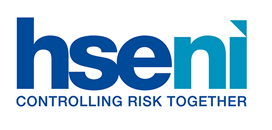Who needs training?
Everyone who works for you needs to know how to work safely and without risks to health.
If you use supervisors or managers to deliver in-house training, they should be experienced and competent in the type of work or operation on which the training is to be given and they may need additional training in the specific hazards of the processes and how you expect the risks to be controlled.
As an employer or a self-employed person, will need to keep yourself up to date with how to identify the hazards and control the risks arising from your work.
What should the training cover?
All employees should be given induction training when they first start work. This should cover basic health and safety procedures including the arrangements for first aid, fire, evacuation and any company rules.
You should identify the skills and knowledge needed for people to carry out their work safely and compare these against people’s current skills and knowledge and identify the gaps.
Your risk assessments and your accident book will also help you to identify areas where further training is required.
Who should deliver the training?
Much of the training required for standard work processes within your business can be carried out ‘in-house’ using experienced workers, but you must make sure that the designated trainers are clear about what you expect them to cover in terms of health and safety and how you expect them to deliver the training.
Certain training, such as forklift truck driver, first aid or scaffolder training can only be given by external training providers.
Should I keep training records?
Although not compulsory, it is a good idea to get employees to sign off on the training they have received and to keep these records within your health and safety documentation. The records should also indicate the content and duration of the training.
When should I give refresher training?
If employees are not using their skills regularly their competence will decline. To avoid this, periodic refresher training should be given. For certain skills, refresher training is compulsory. First-aiders for example must attend refresher training every three years for their training certificate to remain valid.
What about training for young people or migrant workers?
Young people
Young people are a vulnerable group that will require extra training and close supervision. You should outline their specific needs in a young persons risk assessment.
It is important to assess the risks to young people before they start work and to take into account that they are likely to be inexperienced, unaware of health and safety risks and perhaps physically immature.
Once your risk assessment is complete you should put in place measures to remove the risks or reduce them to the lowest levels possible.
Migrant workers
Migrant workers are another vulnerable group which should be given careful consideration and you will need to satisfy yourself that they have understood any training that they have been given. Pictures and diagrams may be useful in helping to deliver training messages. You may also need to make use of a translation service.
Resources
- Health and safety training: A brief guide - HSE(GB) website
- Using contractors: A brief guide - HSE(GB) website
- Universal safety booklet for migrant workers
Key legislation
- Management of Health and Safety at Work Regulations (Northern Ireland) 2000 - legislation.gov.uk
- Health and Safety at Work (Northern Ireland) Order 1978 - legislation.gov.uk
Please note that these links are to the original legislation, visitors should verify for themselves whether legislation is in force or whether it has been amended or repealed by subsequent legislation.
